69 - Inside-Out/Outside-In
an important art concept for life.
👋 Hello.
Today I want to share an important concept of my art process. It helps me tackle difficult subjects. I think it can help you too.
A couple commissioned me to draw a portrait for them to use as a holiday card, after finding me on Instagram. While working on the piece, I decided to use it as a model to explain my process.
I like to describe my drawing style as “only the essential lines”.
In the spirit of a mechanical engineer, I strive to optimize - more work for fewer lines. Tracking the evolution of my art over the last 5 years, I find my drawings depict more details, while using fewer lines to do so.
The drawing process is best described as Inside-Out/Outside-In. Here’s how it works.
🎯 At the macro scale, I go Inside-Out.
Looking at the big picture, I immediately zero in on what is most interesting to me. The subject of my interest gets prime position on my page, and everything else is drawn around it. From the point of interest, I spiral outwards with gradually decreasing levels of detail and attention.
This gives my drawings (and the viewer) a clear focal point. They know where to look.
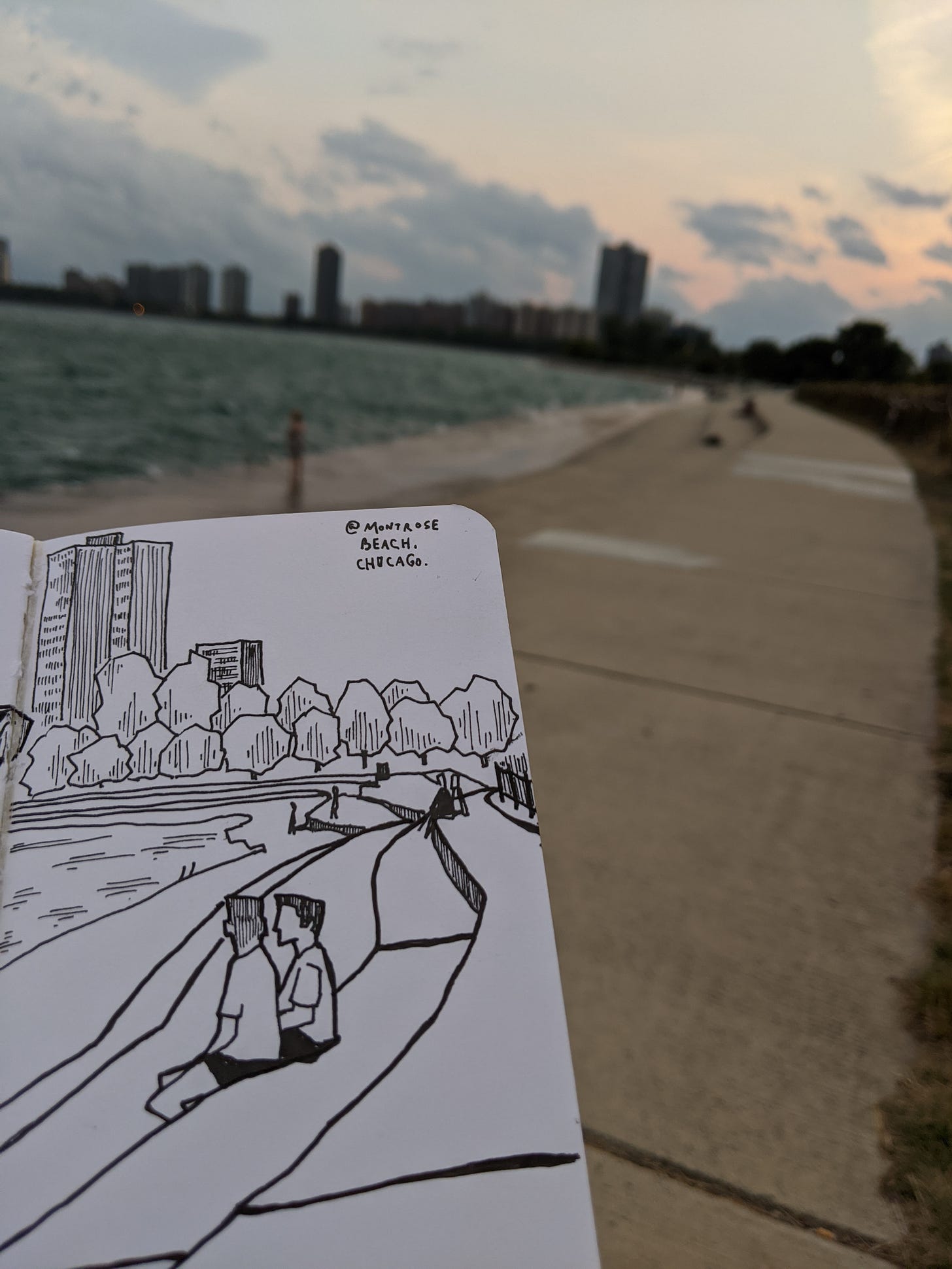
As the artist, this is useful for me too.
It is good practice to narrow down to what interests you. You need to see the art before you can start showing the art.
So no matter how complex the scene, I always know where to begin. And even if I am short on time, an ‘incomplete drawing’ is still meaningful because it has a focus. Like when I’m drawing on the bus and my subject abruptly leaves. (How rude, I know…)
In fact, this technique helps me use my natural impatience to my strength! The less patience I have for surrounding objects, the faster I go about drawing them, and the sharper the focus on what really matters.
And this ties in to the second part of my drawing process.
🔄 At the micro-scale, I go Outside-In.
For every element in my scene, I focus on larger shapes and their relation to one another before going into the details.
This helps when I draw people in a busy space. By capturing the larger shape of their physical presence, I can add details afterwards even if they change their pose. And if they leave, I can borrow features from another person or from artistic imagination (which we recently modeled as the library of good lines).
Even beyond this immediate usefulness, it is very important to dissociate from an object. It can be intimidating to draw a person, whether as a portrait or in the stylized way that I do. To overcome your intimidation, you have to break things down.
You have to see objects not in the way you recognize them - a face, an arm, a leg, or a torso - but as lines and shapes in front of you.
In this way you reduce the world to its parts, and then put it back together in your image.
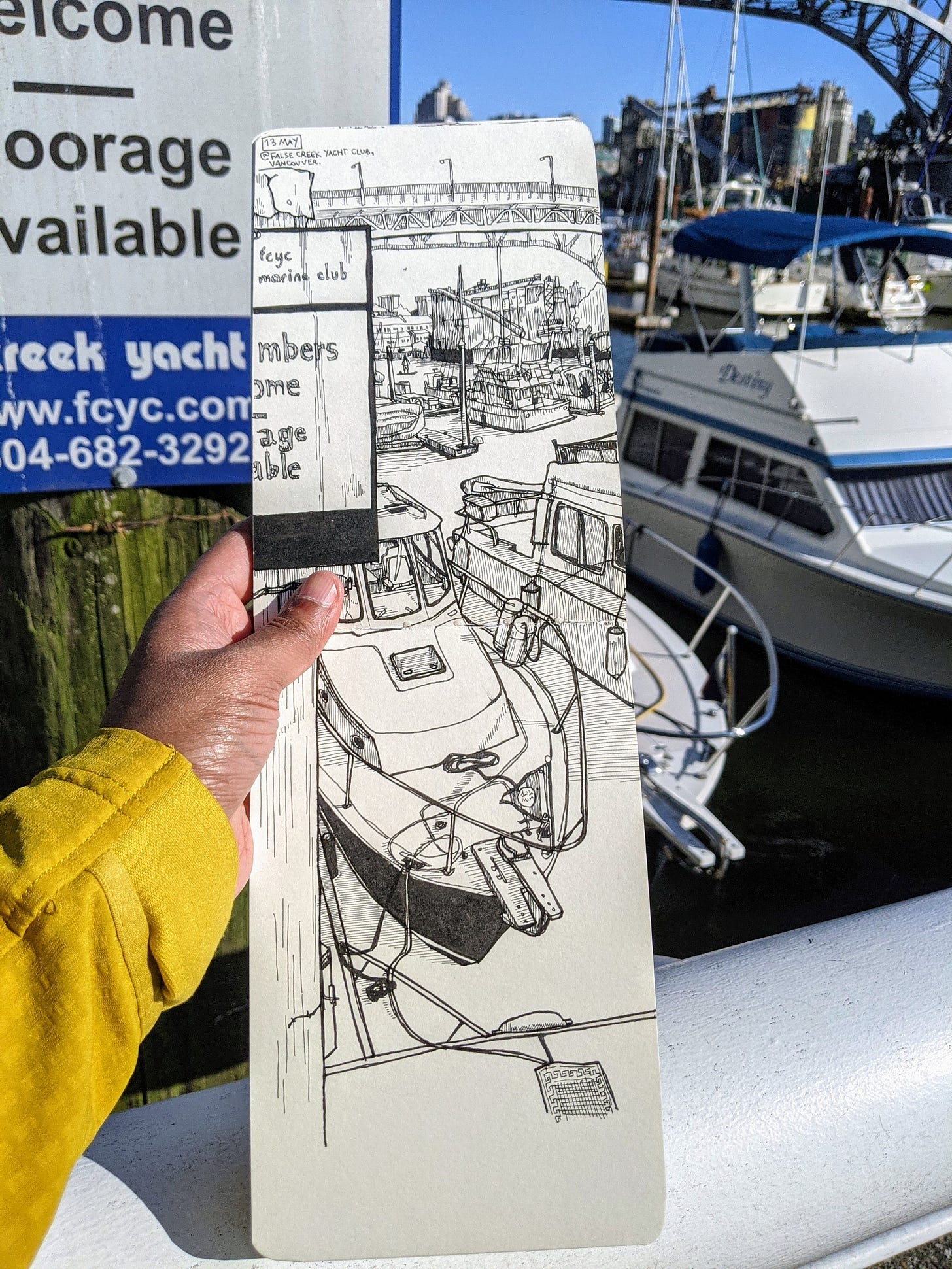
In summary:
I begin at my point of greatest interest, giving it maximum attention (going inside-out) and maximum details (going outside-in). I spiral outwards from my focal point decreasing both details and attention.
Inside-Out/Outside-In naturally introduces features like Sharp Focus, Selective Detailing, Capitalizing on Strengths, and Engaging with Curiosity, to your work. All of these are good things for your art and will help you develop your style.
Here’s a short explainer with the timelapse video of the commissioned sketch.
If that was useful, consider sharing this lesson with someone else who might also like it!
🤯 To People or Not to People?
On the subject of drawing people, if you’re an artist on the fence about drawing people, I have two podcast conversations for you. Listen to my conversation with the wonderful Ian Fennelly in Ep 24 of the SneakyArt Podcast. Ian conspicuously does not feature people in his art even when depicting busy streets. He has some compelling arguments around this decision. Contrast that with Ep 25 with Felix Scheinberger, who centers his art around people and human activity in the urban environment.
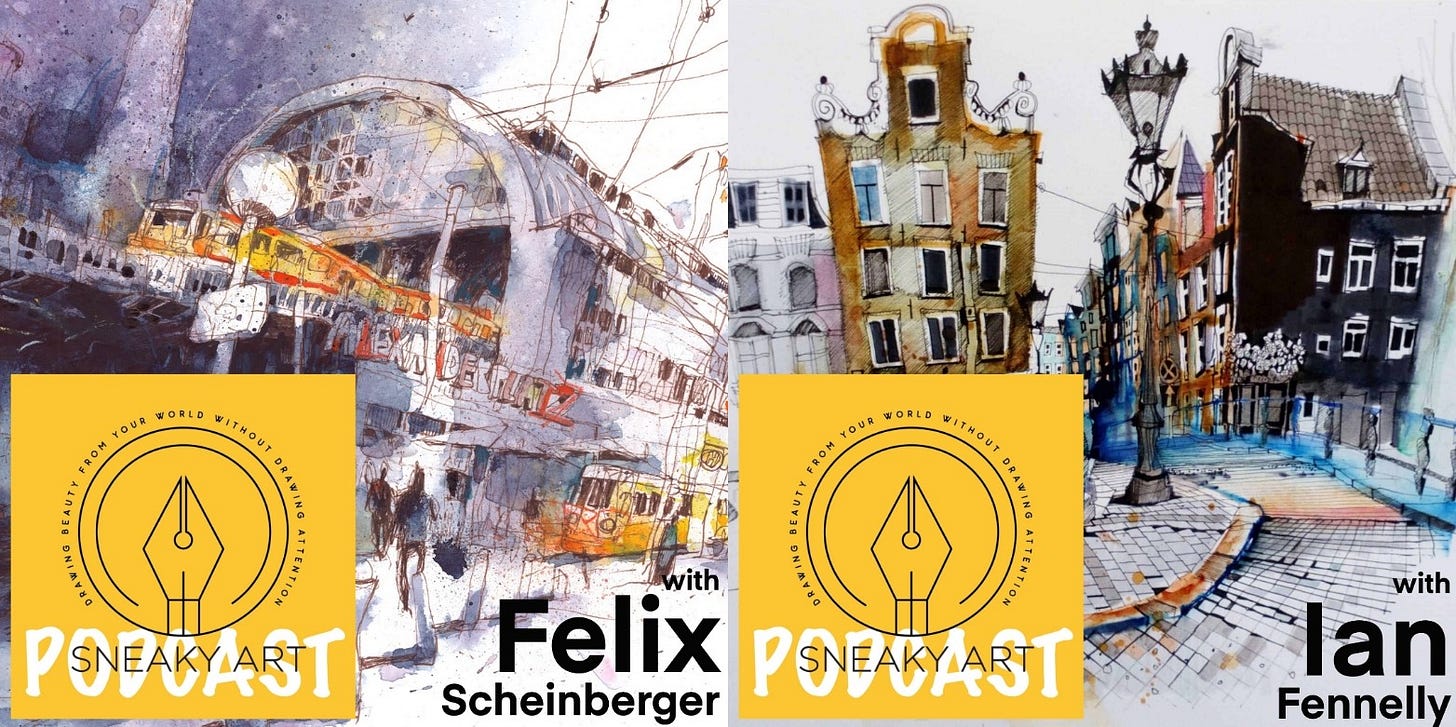
Next week in the new podcast episode, I’ll share another technique that has been of enormous help in developing a distinct style. It’s a long conversation, because my guest is super-talented in multiple directions, and I can’t wait to share it with you!
🎙 Listen to the SneakyArt Podcast (Apple | Spotify | Pocketcast).
☕ Buy Me A Coffee to get an invite to the SneakyArt Discord server.
🔏 SneakyArt Insider Post #1 about inspiration from videogames, #2 a story of a drawing at a cafe, #3 about war reportage and Afghanistan.
Thank you for your time and attention. See you next week!



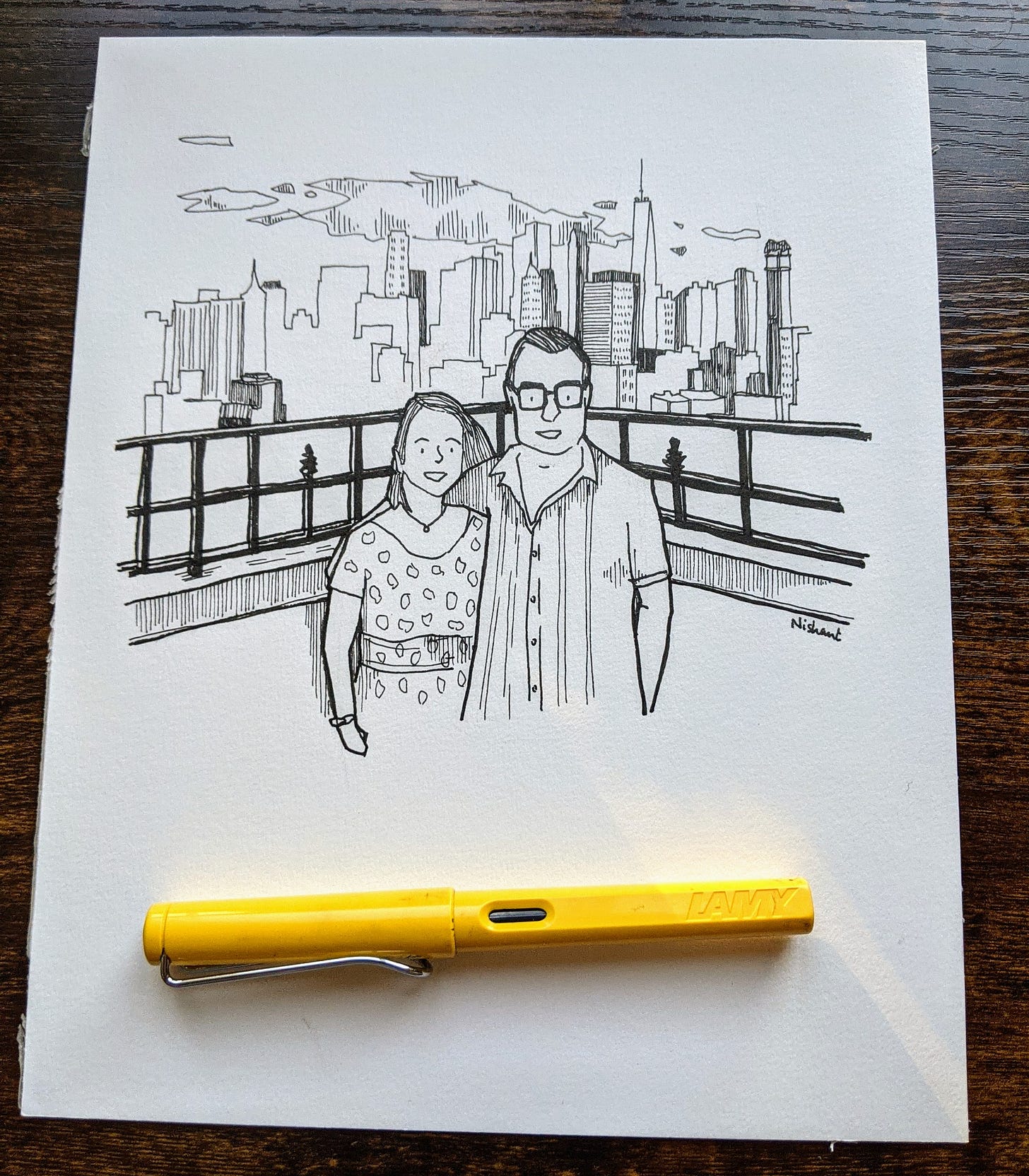
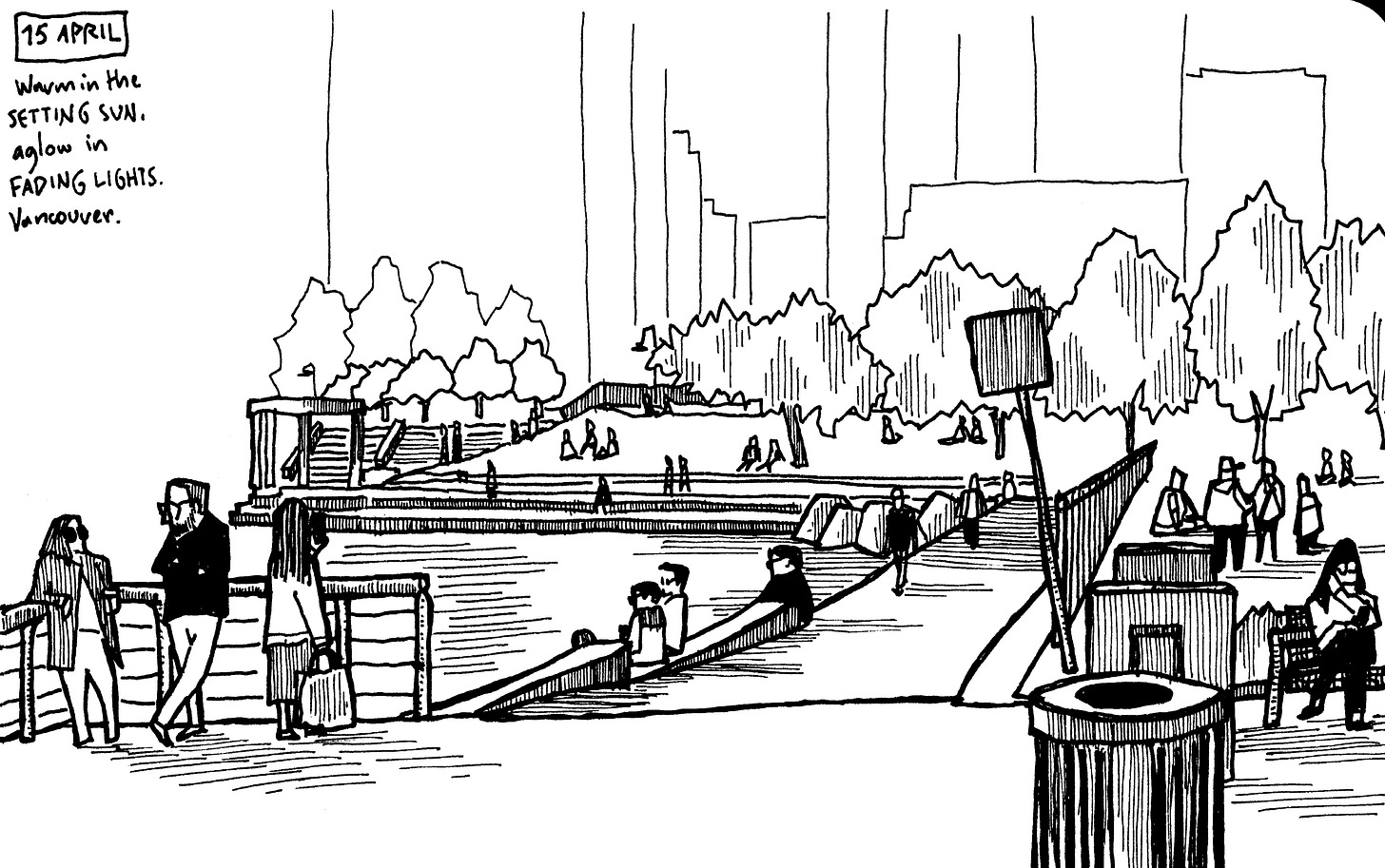
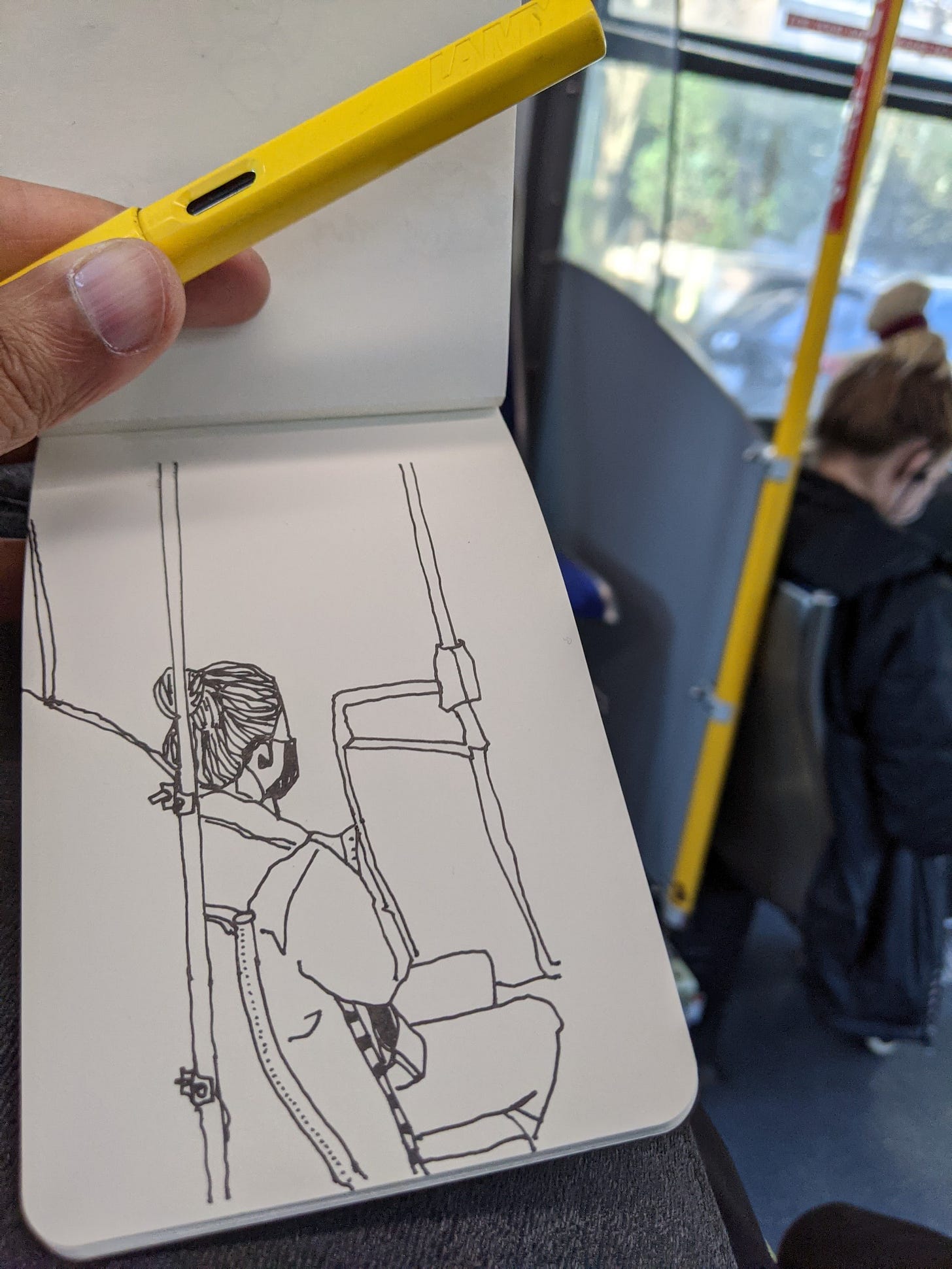
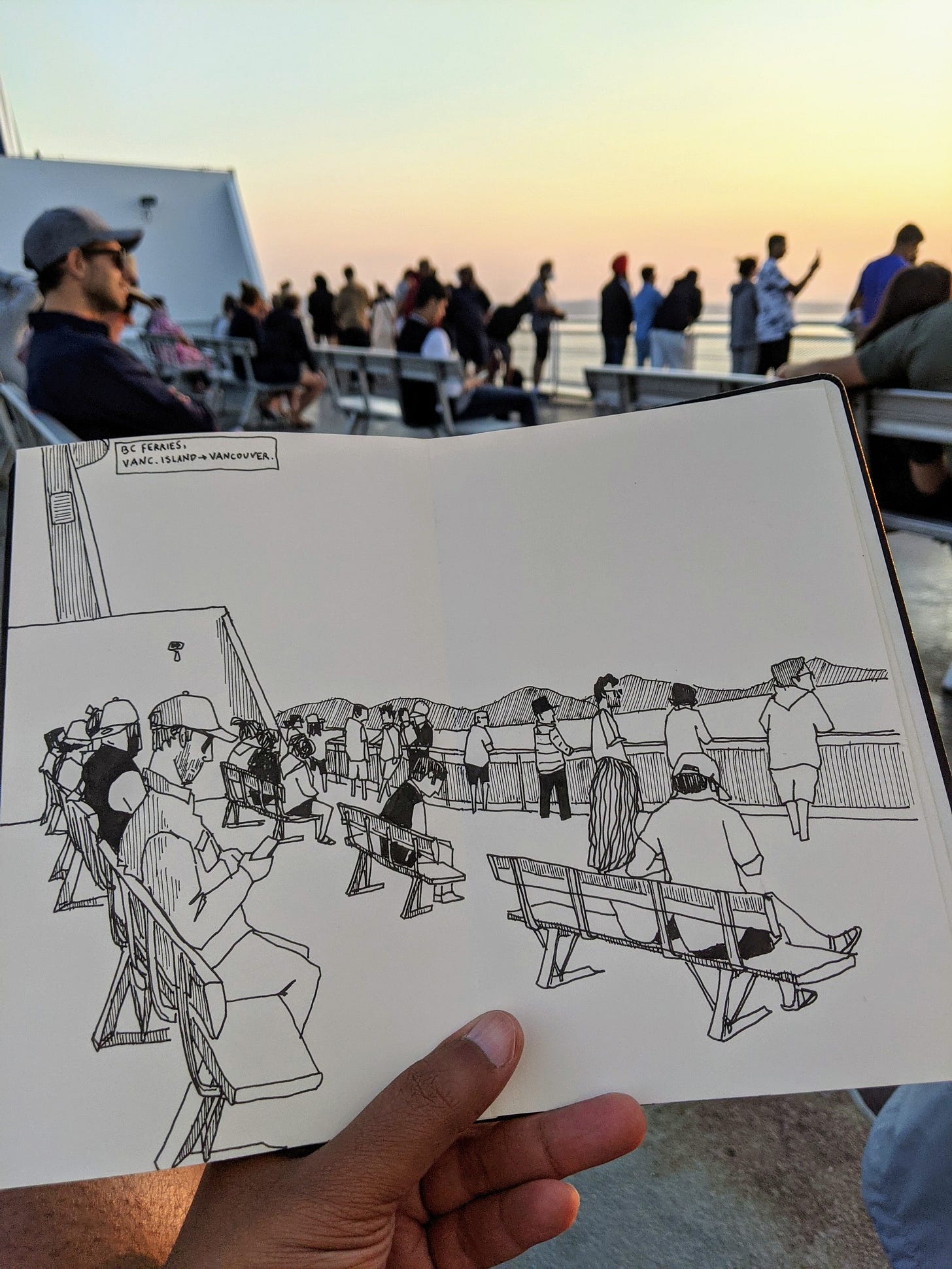



I LOVE the pictures where you have your drawing in focus and then the real-world subject of your drawing in the hazy background. This is done particularly well in the one with the woman wearing her mask while riding the bus.
Ah, right after I commented on another post of yours about it takes discipline to focus on the essentials, there’s now this great post explaining further about it. How timely! I’ve enjoyed understanding more about how you approach a drawing. Thanks!